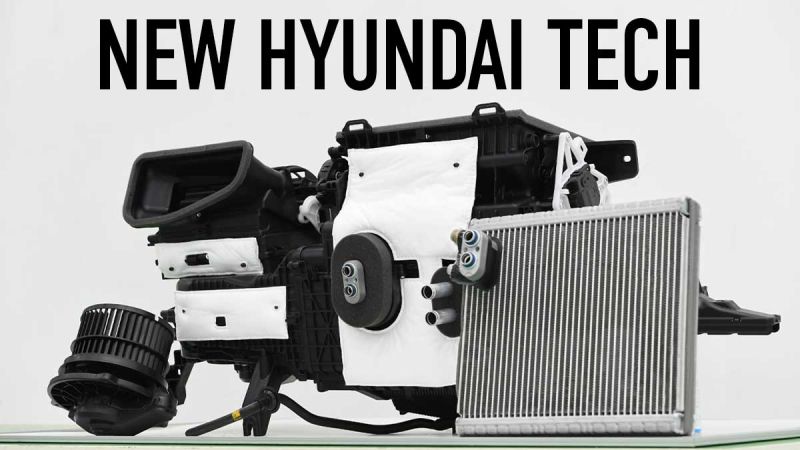Hyundai introduced three new technologies to improve air quality inside the car. The newly announced technology includes an ‘After-Blow,’ ‘Multi-Air Mode,’ and ‘Fine Dust Indicator.’ The mentioned technology will only be available in the Korean market, but Hyundai hopes to roll it out to Hyundai, Kia, and Genesis cars worldwide.

After-Blow Technology
The ‘After-Blow’ technology works after the engine is turned off and activated for 10 minutes to dry the evaporator and any condensate left in the air passage. The air-conditioning system naturally allows outside air during this time to stop humidity from accumulating. The purpose of the After-Blow is to reduce odor during hot weather and suppress mold growth.
Hyundai is claiming the use of IBS, not to be confused with irritable bowel syndrome. The After-Blow instead uses an intelligent battery sensor to monitor the battery and quits functioning when the battery is low, so one doesn’t have to worry about battery discharge. If the outside temperature is low or if the air conditioning is not in use, the After-Blow will cease function.

Multi-Air Mode Technology
The next technology that got introduced is Multi-Air Mode. This feature is exciting because multiple vents are used during air conditioning and heating to create a “gentle wind effect.” This function works by dispersing air to newly added multi-air slots in the driver and passenger seats in conjunction with regular air vents. The overall amount of wind volume is the same, but the dispersion of wind reduces direct air contact to make the air gentle. This technology can get turned on and off as the driver likes.
Fine Dust Indicator Technology
Finally, the ‘Fine Dust Indicator’ technology measures air inside the car in real-time and shows the driver ultrafine particles to manage air quality better. Pollution levels get displayed through integer numbers and colors for easy understanding.
This system measures the number of ultrafine particles, and the scale goes as follows, 0-15 μg/m3 shows blue, 16-35 μg/m3 shows green, 36-75 μg/m3 is orange, and anything exceeding 76 μg/m3 will show red. If the system shows anything over 36 μg/m3 ultrafine particle levels, the air cleaning mode will purify the vehicle’s air. The air-cleaning system will set the air volume between 3 and 8 while switching to air circulation mode and activates air conditioning to reduce indoor humidity. If the feature enables and air quality does not improve, this may serve as an indicator of the driver that the air-conditioner filters need to get replaced as well as cleaning contaminated seats or mats.

Hyundai Air Conditioning Tech Conclusion
Mercedes introduced an air purification system in the S Class and some cologne that gets sprayed through the vents. That’s great, but I think Hyundai went next level with the air conditioning technology here. No, it’s not news about Hyundai making a mid-engine car or a new N model Accent, but this regards your health. I believe this is an important technology that gets introduced in cars globally soon.
Read about Hyundai’s hydrogen commercial truck here.
Kevin Meyn is an automotive journalist for Torque News concentrating on Hyundai content. Kevin is the founder of Exhaust Sports Auto Youtube channel, where he does professional car reviews on new and used vehicles. Through the use of various resources and extended Automotive expertise, Kevin documents the latest in automotive news revolving around Hyundai. Kevin graduated from NC State University studying Supply Chain Management but has had a passion for cars since he was a child. Follow Kevin on Twitter and Instagram @exhaustsports.











